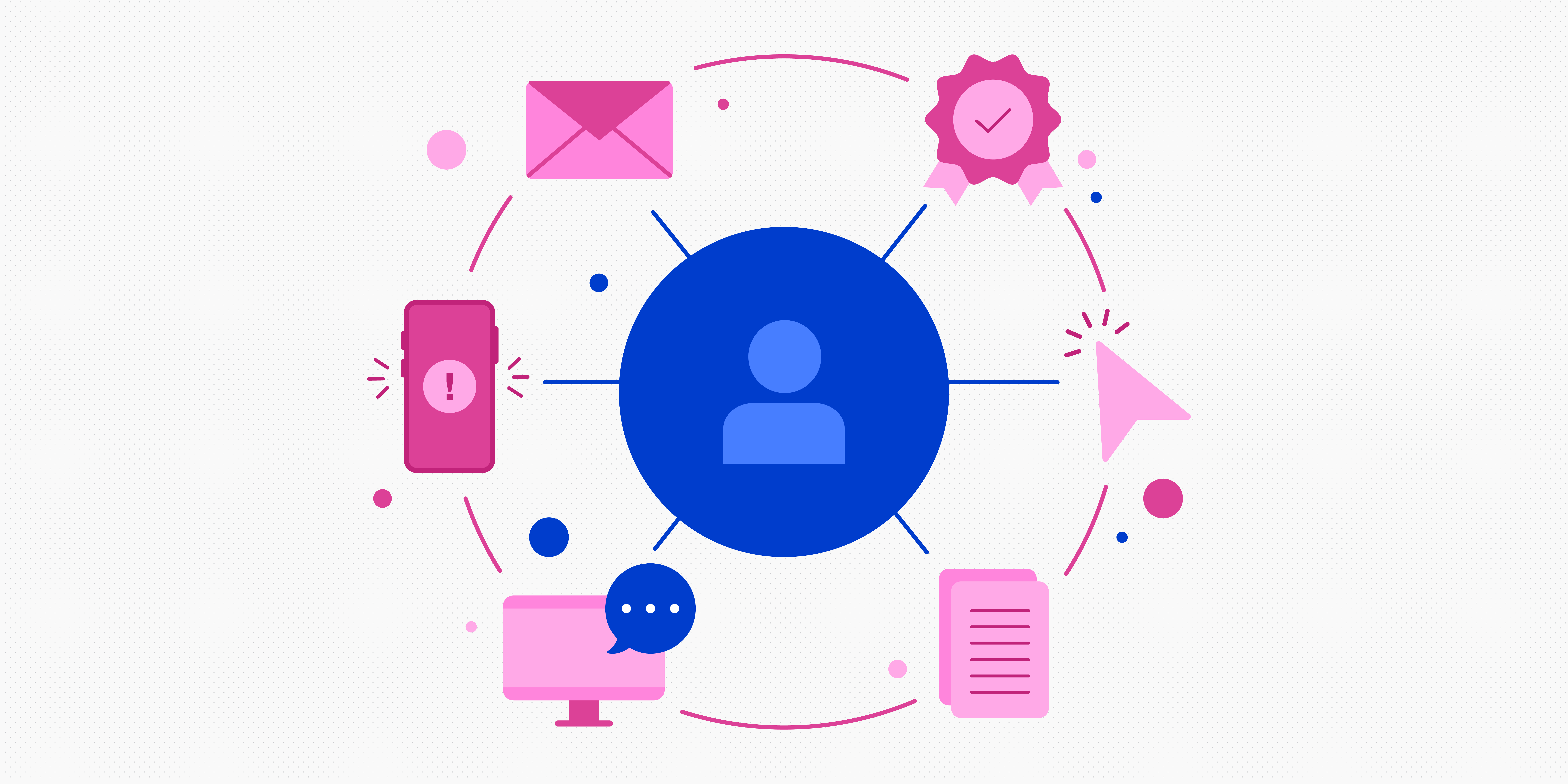Graphic design is a popular field. But what is graphic design exactly, and what does it have to do with UX and UI design?
In the following, we’ll shed light on those questions, and explain how to switch from graphic design to UX/UI design.
What is graphic design?
Graphic design is the artistic discipline of creating visual design content. It communicates ideas through things like colour, layout, and typography. It can be done in print media, with book covers, flyers, and business cards, or digital media, with websites, video games, and banner ads.
What’s the difference between UX design, UI design, and graphic design?
There are a lot of similarities between UX, UI, and graphic design, but there are some key differences, too.
UX, or user experience design, focuses on the entire end-to-end experience. UX designers try to solve a specific user problem with their designs, and focus on making sure that websites, apps, and other experiences are user-friendly and delightful. UX designers map out the overall architecture of a digital product, focusing on everything the end user feels when using that product.
UI, or user interface design, is a digital only discipline. It focuses on creating the visual and interactive elements of all the pages of a website or other digital product. UI designers focus on the website’s interface, the surface layer of the digital product. They also create the style guides for products, ensuring that new elements can be created with the same level of consistency.
Here are the key differences between graphic design, UX design, and UI design:
- Graphic design relates to both print and digital; UI focuses on the design of digital product interfaces; and UX design can be applied to digital products and experiences, but also to physical products and intangible services
- Graphic design focuses on communicating a message to the user; UI and especially UX design focus more on usability and helping the user interact with the product
- Graphic design tends to focus on single products that don’t change; UX and UI design are constantly evolving their products with the times
What’s the relationship between UX design, UI design, and graphic design?
UX design, UI design, and graphic design overlap on several factors. Most importantly, they all use design principles to reach their goals. These include hierarchy, balance, contrast, proportion, etc. Employing these principles in all three disciplines is a valuable skill.
Furthermore, most graphic designers will know at least some of the same software that UX and UI designers use. This is a transferable skill you can use when you switch from one discipline to another.
Perhaps more importantly, you’ll find that there are many overlaps between whatever software you use and the software the other discipline uses. For example, one software program might help you with composition as easily as another.
What are the key elements and principles of graphic design?
Graphic designers use several key elements to create work that has an impact. These elements include:
- Colour: Perhaps the most important element, colour can draw the eye and evoke emotions.
- Line: Whether it’s straight, curved, dashed, short, or long, lines divide up space.
- Shape or form: A combination of two dimensional or three dimensional lines can influence perceptions.
- Size: The size of objects in a design can create a visual hierarchy.
- Space: Using space in a design can give elements the room they need to shine.
- Texture: Texture can be used to create a three-dimensional appearance.
- Typography: Typography is the art of arranging text in readable, legible, and appealing ways. Different emotions can be expressed through different text choices.
Graphic designers also champion a series of principles. These principles help them achieve the most attractive design. They include:
- Balance: The distribution of the elements of a design can be balanced, contributing stability, or unbalanced, contributing liveliness.
- Contrast: Contrast can create striking differences that direct the viewer’s eye to different parts of the design.
- Emphasis: Emphasis can create a focal point around which other elements of the design flow.
- Movement: Movement gives designers the ability to lead viewers’ eyes around a design via direction, colour, shape, and contrast.
- Proportion: The size of elements in relation to each other signals their importance (or lack of importance) in a design.
- Repetition: Repeating the same colour, typeface, or other element to create extra emphasis.
- Hierarchy: The most important elements in a hierarchy should appear to be the most consequential.
What are the different types of graphic design?
Graphic design is everywhere, and there are a variety of kinds of graphic design, with different specialisations and skills. These include:
Brand graphic design
Brand design focuses on communicating the visual identity of a brand. Designers do this through logos, typography, and colour palettes and their work appears on everything from billboards to letterheads and business cards to websites.
Here’s an example:
By nnorth
Marketing and advertising graphic design
This kind of design focuses on selling products or services to consumers. Designers in this area may work on the graphic design for print assets, including trade show booths, billboards, flyers, and catalogues, or digital assets, such as video ads, email marketing, and social media posts. Those in marketing design have a strong understanding of how to communicate with their target audience to sell products.
Web graphic design
This discipline is the closest thing you can have to a career in UI or UX design and still be a graphic designer. In fact, you may work in teams with UI and UX designers. Web designers design websites and other web products by creating the visual elements, including text, buttons, icons, images, illustrations, web page layouts, videos, and other interactive elements.
Publication graphic design
This kind of design focuses on the layout, typography, and artwork in publications, such as books, magazines, newspapers, emails, catalogues, and digital publications. They set the tone for anything that involves the written word.
Here’s an example:
By Alexia Lim
Packaging graphic design
Packaging design aims to not just protect a product but to complement the item’s best assets. That can mean setting a calming tone through the colours they choose to use for the package for a bar of soap or getting consumers excited about trying a new beer through a thrilling bottle design. Package designers develop mockups and make printable files that can be used to create any kind of packaging.
Environmental graphic design
Environmental design connects people to places and makes those places more memorable or informative. Environmental design can include signage, wall murals, office branding, public transportation navigation, stadium branding, and more. Environmental designers combine many different types of design, including architectural, landscape, and industrial design, with graphic design to implement their work.
An example:
By Artur Busz
Illustration graphic design
Illustration designers focus on illustrations for projects, such as children’s books, cards, t-shirts, video, interactive media, and marketing campaigns. These designers may create purely digital assets or start with pen and paper.
Type graphic design
Type design creates or selects fonts for a variety of projects. Type designers can create assets for marketing, package, or web design projects either through custom typefaces or through selecting fonts. They can also create typography guidelines for a brand.
Here’s an example:
By Vocal Type
What does a graphic designer do?
Graphic designers communicate messages through visual compositions that inform and inspire. Each day, they use their creativity and artistic skills to create visually stunning graphics. They also frequently revise graphics, tweaking and editing their creations until the client is happy with them.
Of course, depending on the kind of graphic design one does this could look very different. For example, an environmental graphic designer may work on a wayfinding system in a subway while a packaging graphic designer may work on the packaging for the latest iPhone.
Here are some of the tasks graphic designers will carry out on a regular basis:
- Produce and revise creative assets for physical or digital platforms
- Take part in creative ideation sessions
- Plan and execute campaigns from concept through delivery
- Support internal teams and external clients
- Maintain the brand’s visual style and personality, including through the creation of style guides
- Use digital tools like Photoshop and Illustrator
Graphic designers can work in big or small corporations and can even be a team of one as a freelancer. Some places graphic designers can work include:
- Ad agencies
- Marketing firms
- Print and online publishers
- Web design companies
- Non-profit organisations
What are the most important graphic design skills?
The most important skills for a graphic designer to master are:
Colour theory
Colour theory helps you choose appropriate colour palettes for projects. It gives you a set of rules that will help you understand how people see and interpret colour.
Layout
Layout lets you use visual space to attract consumers. The space may be physical or digital. This skill is also utilised by UX and UI designers.
Typeface design
Typeface design focuses on telling stories by using appropriate and pleasing typefaces, or fonts, that focus on the particular design of letters and numbers either in print or digital.
Communication skills
Communication skills allow you to understand what clients and stakeholders need from a project. UX and UI designers also have this skill. All three disciplines use it to listen and problem solve with their clients and stakeholders.
How to switch from graphic design to UX/UI design (and why it’s worth doing)
If you’re a graphic designer, switching to UX or UI design (or both!) can be a valuable career move. Here’s what you should know.
Why should graphic designers consider learning UX/UI?
More and more, graphic designers are being asked to learn UX and UI skills on the job. Being able to formally learn UX/UI in a class allows graphic designers to fill in the gaps in their knowledge and have more confidence in their skills. Similarly, freelance graphic designers are being given more opportunities to take on UX or UI projects and they want to be able to do so with confidence and skill.
Moreover, learning UX/UI can open up a whole new career path to graphic designers, including more career prospects and a higher salary. In fact, salaries for UI designers were approximately €23,000 more than graphic designers in Ireland and £18,000 more than graphic designers in Britain.
How to switch from graphic design to UX/UI design
If you want to switch from graphic design to UX/UI, you’re in a great position. You already possess many essential skills such as visual communication, knowledge of fundamental design principles such as layout, typography, and colour theory, and important soft skills like collaboration, attention to detail, and problem-solving.
This is a strong foundation to build on! To transition to UX/UI, you’ll need to learn additional skills, principles, and techniques such as design thinking, user research, wireframing and prototyping, and usability testing.
You’ll also need to build a strong UX/UI design portfolio. If you’ve already got a design portfolio, you’ll need to add case studies that highlight your proficiency in the UX design process. If you’re curious about how a UX/UI design portfolio should look, check out these UX portfolio examples.
If you want a structured and effective route from graphic design to UX/UI, consider a professional course. The UX Design Institute has helped many graphic designers successfully make the switch—like Brian, who switched from agency graphic designer to in-house UX designer, or Paul, who went from running his own graphic design business to working as a UX specialist.
If you, too, want to level up your design skills, check out the UX Design Institute’s Professional Certificate in UI Design and the Professional Diploma in UX Design. We’ve also written separate guides comparing the best UI courses and UX courses currently on the market, so do your research and see which option suits you best.
Whichever route you choose, you’ll find plenty of overlap between your existing graphic design skills and those you need to learn for UX/UI, so you’re in good stead!
Furthermore, graphic design has a global community that you can use to find meet-ups, webinars, or forums. Use your existing network to find mentors, industry experts, and clients that can help you find jobs and give feedback.
Key takeaways
Now that you’ve finished this guide, you should have a thorough understanding of what a graphic designer does and what UI/UX have to do with it.
To recap: Graphic design is a discipline that creates print or digital visual designs that communicate a message. In contrast, UX and UI design focus on usability and helping the end user interact with their products.
There are numerous disciplines that graphic designers can specialise in. Anything from package graphic design to brand graphic design to type graphic design are possibilities.
Graphic designers are being asked to take on UX and UI tasks more and more, and learning UX or UI design can be a valuable way to further your career—or take on a new one.
For more tips and insights, check out these posts:
- What skills can be transferred from graphic design to UI design?
- Why graphic designers need to learn UX
- Moving from graphic design to UX: a practical guide


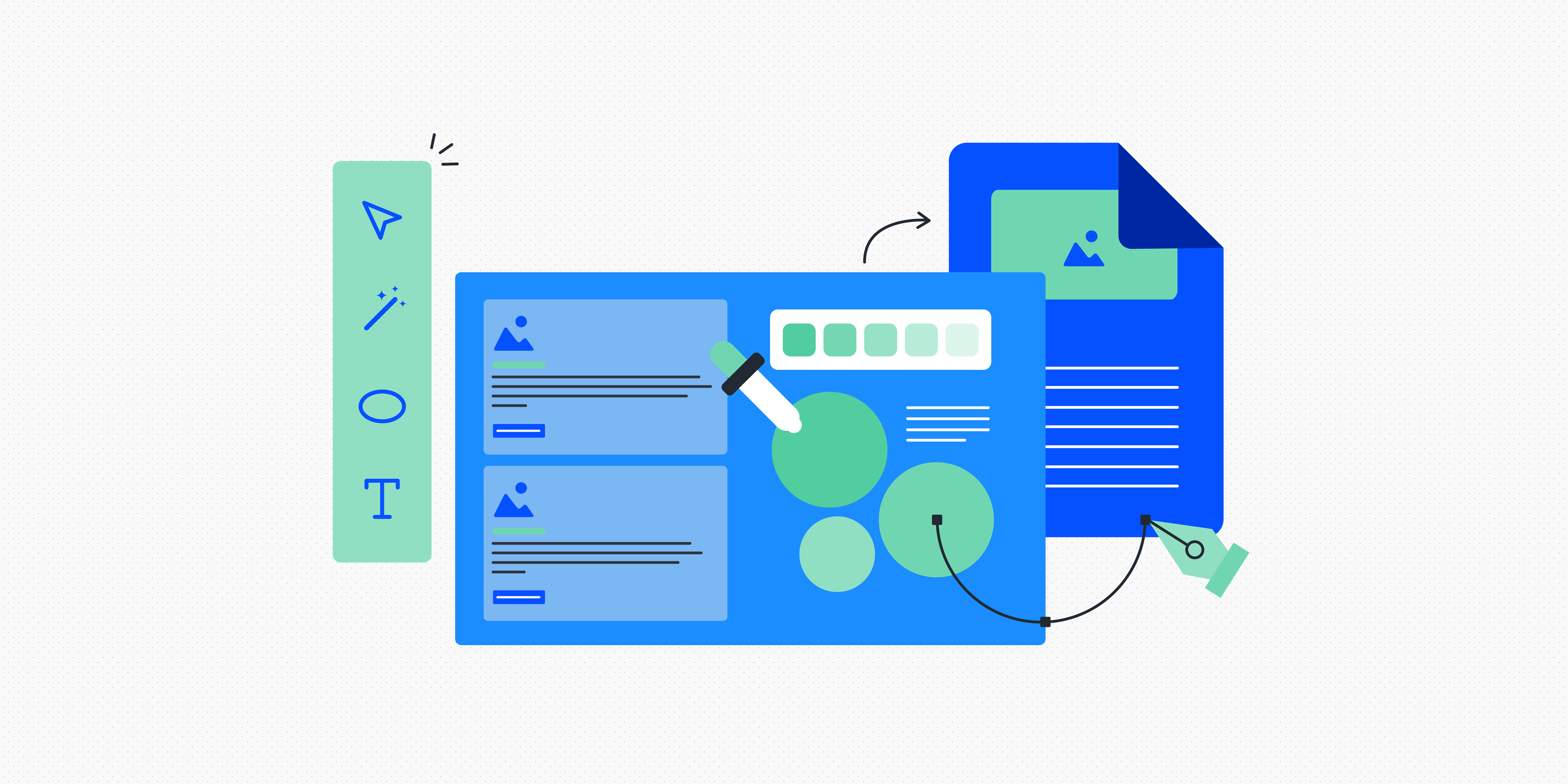
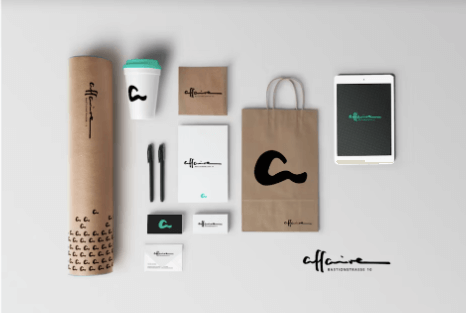
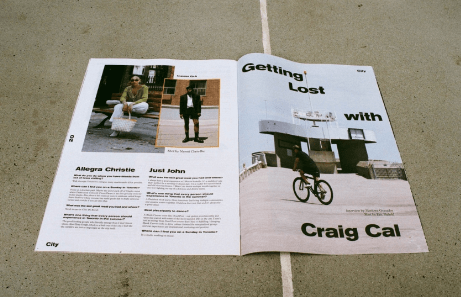
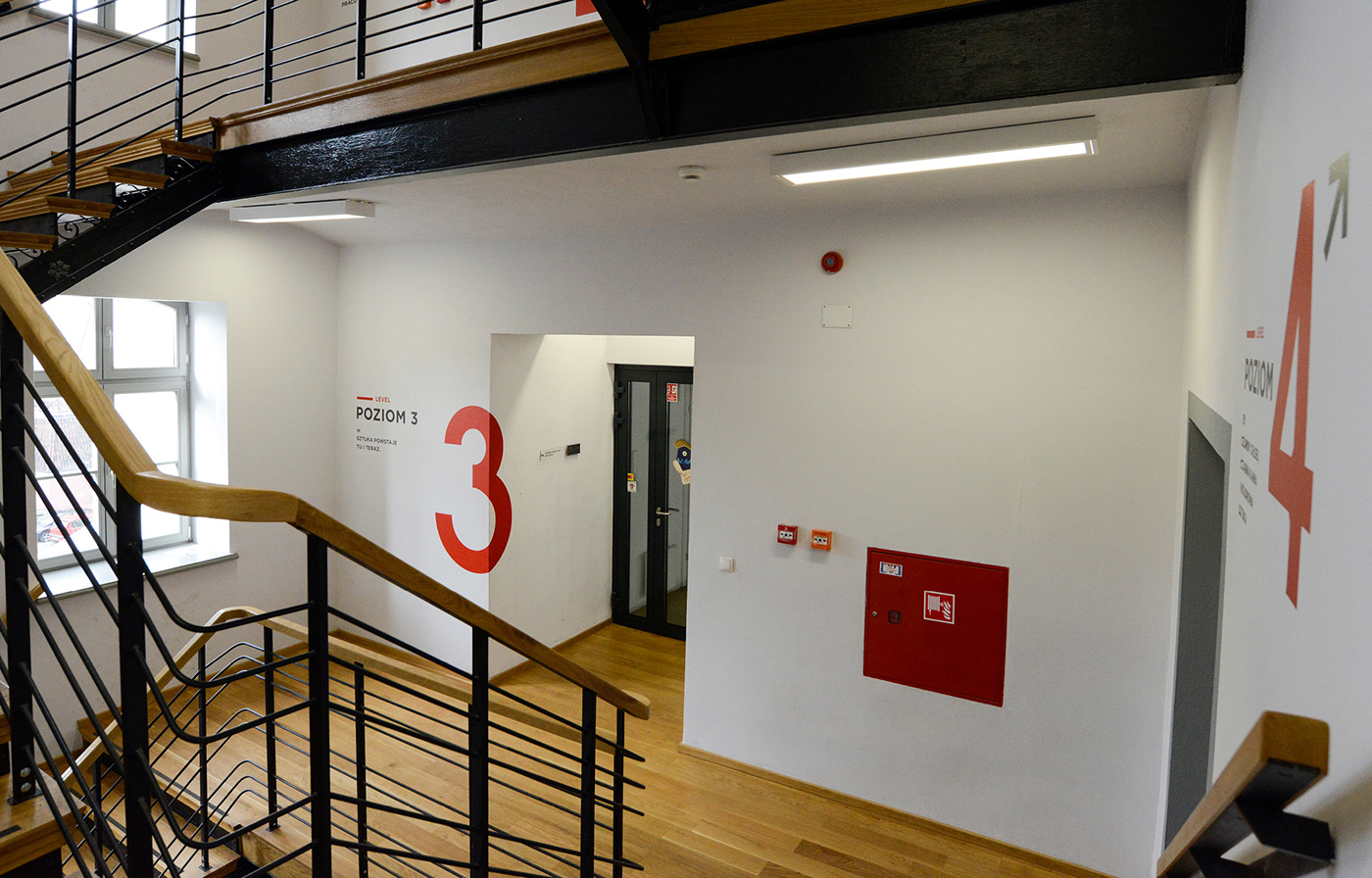

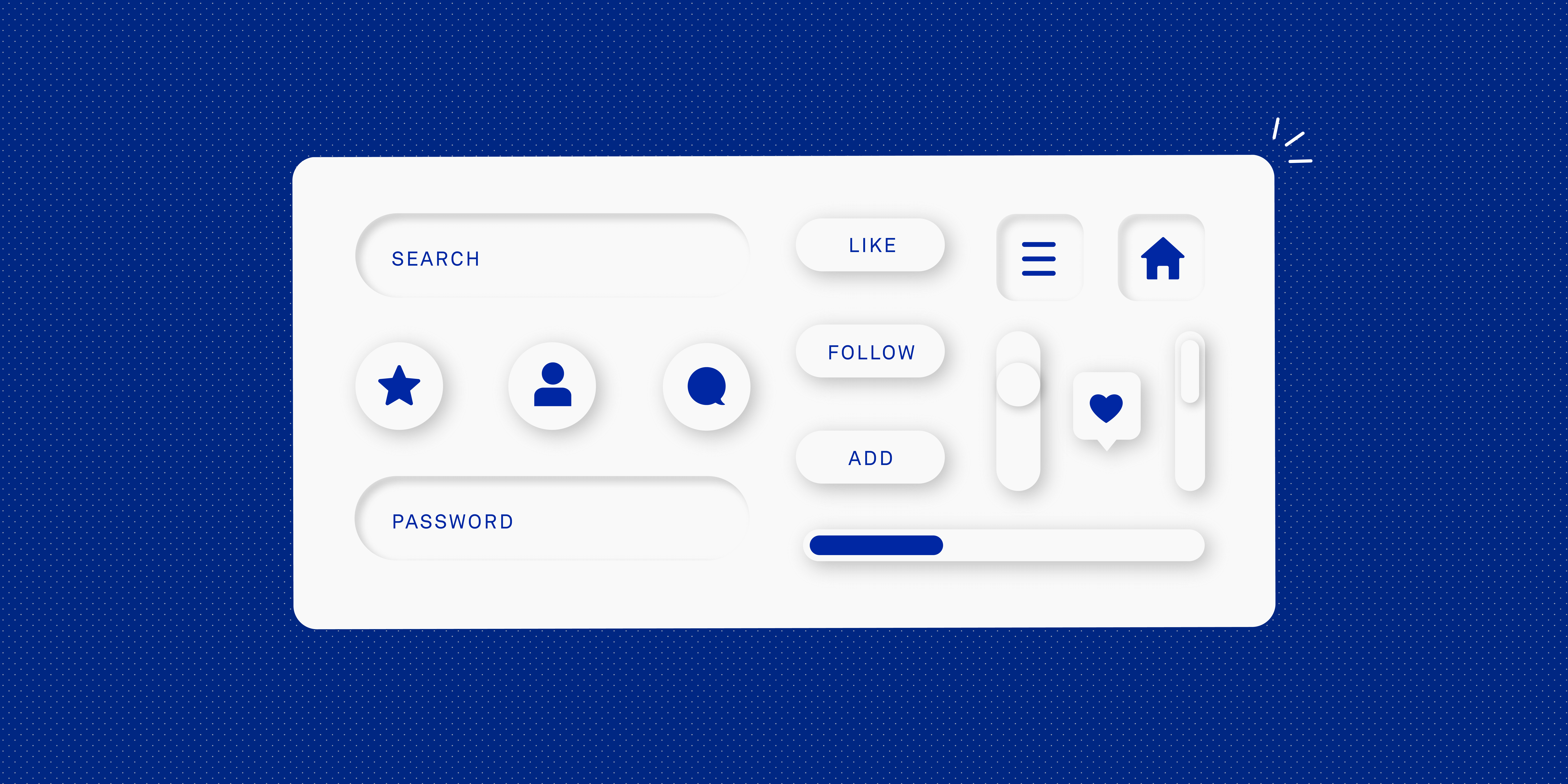
![The 10 best prototyping tools for UI/UX designers [2025 Update] 7 UI UX prototyping tools header image](https://www.uxdesigninstitute.com/blog/wp-content/uploads/2025/01/93_UX_Prototyping-tools_Illustration_blog-1.png)
